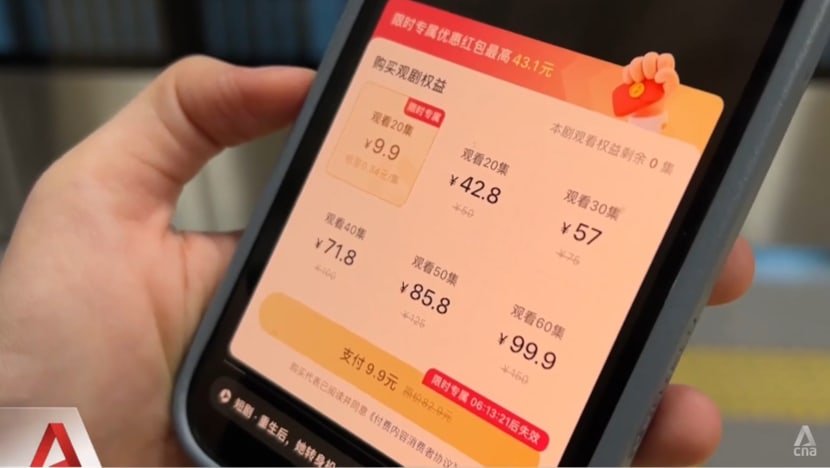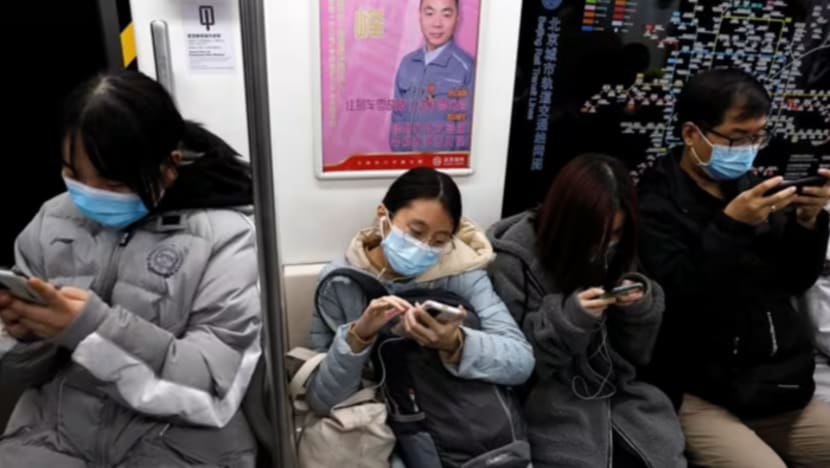China’s micro-drama boom takes viewers by storm both at home and abroad
Observers said the formula - snappy storylines that end each episode in a cliffhanger - can be addictive for viewers and the format is profitable as it is easier and cheaper to produce compared to traditional content.

A commuter watches a micro-drama on her mobile phone at a train station in Beijing, China. Storylines typically revolve around themes like romance and revenge, and each clip - usually just a minute long - ends in a cliffhanger to keep viewers hooked.

This audio is generated by an AI tool.
BEIJING/CALIFORNIA: Move aside J-drama and K-drama. In the fight for eyeballs in a world where attention span is dwindling, Chinese drama is making inroads with a new, bite-sized, vertical format genre.
These ultra-short, binge-friendly micro-dramas have taken the Chinese market by storm in recent years. Each episode lasts around just one to two minutes each, and is designed specifically for mobile viewing.
This means viewers do not have to commit too much time, compared to traditional content where even the shortest shows last 10 to 20 minutes per episode.
They can easily consume such scaled-down content on the go – during meals, while commuting, or even in between chores.
Given that an overwhelming majority of such mini-drama viewers are female, the protagonist is usually a woman. Storylines typically revolve around themes like female empowerment and romance, and are peppered with feel-good elements.
They pull users in with free-to-watch content at first, and most episodes tend to end with a cliffhanger or twist to keep viewers hooked.
But a few episodes in, and just as the plot gets juicier, the platform then requests that viewers pay to continue watching the rest of the series. Each show could consist of about 20 to 100 episodes in total.
There are different packages with varying prices – some charge US$1 for 20 episodes, while others cost US$10 to catch 60 episodes. Some series allow users to unlock more episodes by watching advertisements instead of paying.

WHY ARE MICRO-DRAMAS SO POPULAR?
Micro-dramas on online platforms have experienced rapid growth in the Chinese market over the past two years, and the trend is expected to continue to grow in popularity.
Industry observers put the estimated market value of the sector at around 38 billion yuan (US$5.3 billion) in 2023 – a triple-digit growth compared to the previous year. The industry is expected to exceed $50 billion yuan this year.
Observers said the formula can be addictive for viewers and the format is profitable as it is easier and cheaper to produce compared to traditional content.
“Chinese short drama apps are not using A-list stars. They are not trying to produce award-winning programmes. They're trying to focus on their budget … with low production cost, very simple sets and costumes, and little-known actors, ” said media studies lecturer at the University of Kent, Dr Oscar Zhou.
“Top key features (of the shows) include very rapid plot twists, intense emotional conflicts, and minimal character development,” he told CNA’s East Asia Tonight on Tuesday (Apr 16).
However, observers warned that the themes, mostly centred around love and revenge, can get repetitive, which could affect viewers’ interest in the long run.

RISE IN INTERNATIONAL POPULARITY
Outside of China, the super-short-form episodic video content took off in Asia during the COVID-19 pandemic years as viewers sought quick entertainment amid movie theatre closures.
However, until recently, it had yet to win over audiences from the United States.
Short-form video streaming app ReelShort is changing that, quickly becoming one of the most downloaded entertainment apps in the US.
“People call us the mini soap opera. They watch our shows at lunchtime, while waiting for elevators, etc,” said Mr Joey Jia, CEO of Crazy Maple Studio, the company that publishes the platform.
Mr Jia, a Chinese tech industry veteran who founded the California-based firm, said the key to a successful show is keeping the plot moving – and fast.
"We have to change the entire story structure to put the biggest hook at the very beginning. If we don't hook people at the very beginning, we're losing people,” he explained. “So, we didn’t invent a brand new market. We are still focusing on romance stories, (but) we try to create a new different way of storytelling.”
Some industry experts said they believe the brand’s success is a sign that audiences are ready for something different from the user-generated content that dominates TikTok and other social media platforms.
“Videos that people are kind of over-consuming right now, they're getting a little tired of them because it seems like every time you scroll, you're getting (the same content). I feel like the industry's going where they want to see better, higher quality produced stuff,” said creative director of production agency Envy Creative Mike Vannell.
Right now, it is still early days for micro-dramas, especially outside of Asia. But as more viewers catch on and competitors take note of what companies like ReelShort are doing, experts said every minute counts in content production as other firms look to jump on the bandwagon.





















